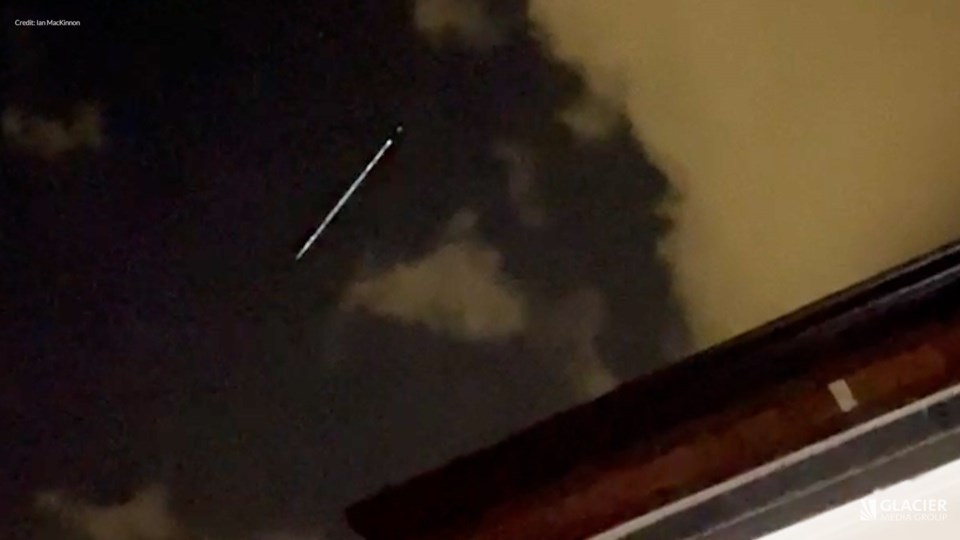Everything can seem a little weird when you’re emerging out of the acute phase of a global pandemic. Then there are the stories you just can’t get out of your head.
Here are three of the most absurd, weirdest and just eerie stories we reported on this year.
Trapped B.C. bear ravages car, poops inside
When nature calls, sometimes you can’t wait.
For Stephanie Hannay, the first signs someone (or something) was in a desperate situation came at 10:30 p.m., when her vehicle horn started sounding outside her house.
Peeking out her window, everything seemed normal, until it went off again.
“I opened the driver-side door and this head pops out in the back seat and it’s just a bear. I couldn’t believe it,” the Tofino, B.C., woman later said.
She ran back inside and called the BC Conservation Officer Service: “He’s like: ‘What seems to be the problem?’ And I am like: ‘There’s a bear in my car.’”
Conservation officer Sgt. Stuart Bates later said he believed the bear was the same serial car burglar who had damaged 12 other vehicles over the previous six weeks as it looked for food.
Inside Hannay’s car, all the panels were torn off. Even worse, she said, the animal had defecated at some point while it was stuck inside.
“It smells so bad in the car. It is gross. It is absolutely disgusting,” she said.
Kelowna woman begins cloning process for beloved cat
Some people can’t let go. Now, thanks to modern technology, they may not have to.
This year, Kelowna’s Kris Stewart missed her deceased pet cat Bear so much that she decided to bring it back to life — through cloning.
It’s not the first time she has tried to bring a pet back. A previous attempt to resurrect a cocker spaniel failed when the cells were found not to be viable.
This time around, Stewart said she froze the cat to preserve its DNA and is now working with Texas-based cloning company ViaGen to create a clone of Bear in a process that can cost US$35,000.
But Bear had a big personality and bringing him back will help fill an emotional hole left after his passing.
"To me, it's worth it," she said.
Car rental company bills woman for driving 36,000 km in 3 days
An $8,000+ bill for three days of driving would startle anyone.
But after North Vancouver’s Giovanna Boniface dropped off a Yukon Denali from Avis Car Rental at Toronto’s Pearson International Airport last summer, the numbers that came back were eye-popping.
The receipt indicating she’d driven 36,482 kilometres in 68 hours — something that would have required Boniface to have driven 536.5 kilometres per hour non-stop.
The woman said the trip she made was only about 170 kilometres.
“I'm like, ‘Oh my gosh,’” she said. “It's pretty nuts.”
After a Glacier Media reporter contacted Avis about Boniface’s experience, the company contacted her with an apology and a promise that she would have the extra charges refunded.
Mysterious ‘hum’ annoys and confounds explanation
Only in North Vancouver. Am I right?
Last winter, the Central Lonsdale neighbourhood sat at the centre of an intractable mystery: a strange, low-frequency buzz — or was it a hum?
Complaints flooded into the City of North Vancouver and even prompted Vancouver Coastal Health to launch an investigation.
“It’s totally permeating my apartment. I had to keep all my windows shut. I put up two-inch Styrofoam sheets against my windows. Like nothing would keep that noise out,” Linda Cameron, who lives at 16th Street and St. Georges Avenue, said.
“It seems to be on a slow pulse,” added Cath Ennis, who lives at 14th and St. Andrews and described it as “more of a vibration than noise.”
The official conclusion on the source of the low-frequency noise: inconclusive.
“That stuff can travel miles and it's hard to pinpoint because it just bounces off whatever is in front of it and changes direction,” city bylaw manager Paul Duffy said. “I wish I could pinpoint it and make it go away but we haven't been able to fully source it.”
Light train in night sky leaves B.C. residents awestruck and scientists concerned
What might seem like an awe-inspiring display of celestial light today could be the humdrum orbital light show of the future.
As a province, we clearly hadn’t arrived at that point when on Aug. 22 a slow-moving train of lights left many wondering what was flying above them.
Some B.C. residents took to social media to ask if it was a plane, train, UFO or alien.
“It’s like somebody is towing something,” one person can be heard commenting in a video posted to social media.
Wrong, said Aaron Boley, associate professor in the department of physics and astronomy at UBC.
Instead, it was SpaceX deploying a train of 53 satellites in low orbit for its Starlink network.
Some astronomers have raised concerns that the amount of debris in space is reaching levels that would muddle the night sky for science, something that could lead to dangerous collisions.
It’s not just SpaceX with the up to 12,000 satellites it could place in orbit. Canada’s Telesat, Amazon, and the U.K.-headquartered OneWeb all have plans to launch vast networks of satellite constellations into low orbit.
As Boley put it, a “space traffic management crisis” is brewing in low-Earth orbit.
“There’s so much stuff that’s going out there, and everything is moving so fast,” he told Glacier Media at the time.
“And we have so many different operators that there is a real chance we’ll have a collision, a big space accident, and that has ramifications for everyone.”



